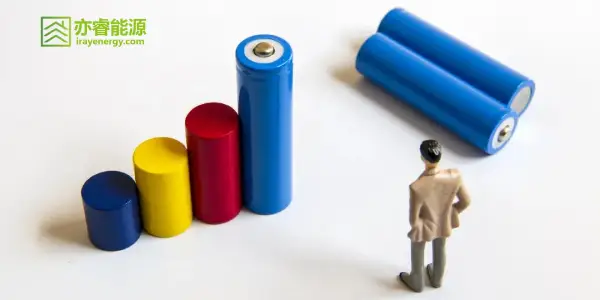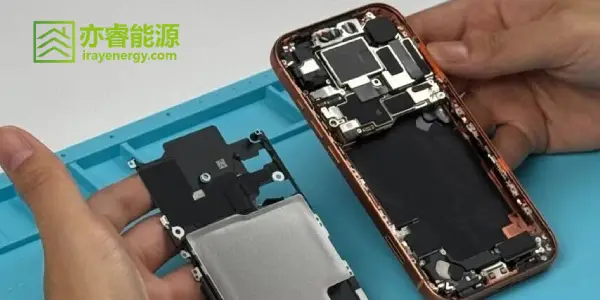Fuel Cells vs. Lithium-Ion Batteries: Who Will Lead the Future of Energy?
With the global energy transition and low-carbon transformation accelerating, competition in electrochemical energy technologies has become a focal point. Lithium-ion batteries, backed by a mature industrial chain, are already widely used in consumer electronics and electric vehicles. Fuel cells, on the other hand, are highly regarded for their advantages in energy density and fast refueling. This article will compare the differences between fuel cells and lithium-ion batteries in terms of working principles, application scenarios, advantages, and limitations, while exploring their respective roles in the future energy landscape.
1. Basic Principle: Conversion vs. Storage
The biggest difference between fuel cells and lithium-ion batteries lies in their operating modes:
Fuel Cells: Input chemical energy (such as hydrogen or methanol), output electricity. Essentially, they are energy conversion devices.
Lithium-Ion Batteries: Input electrical energy, store it in the cathode and anode materials, and release it when needed—functioning as energy storage devices.
Despite their different working modes, both share similarities in the discharge process. Unlike heat engines, they generate electricity directly through electrochemical reactions, resulting in relatively high energy conversion efficiency.
2. Advantages of Fuel Cells
Greater significance in energy restructuring
Over the next one to two centuries, when fossil fuels will still dominate, improving efficiency in the conversion of primary energy to end-use energy is crucial. As energy conversion devices, fuel cells have strategic importance comparable to steam engines during the Industrial Revolution—not just optimizing utilization, but reshaping the entire energy system.
Stronger potential in the automotive sector
Fuel cell vehicles provide an experience closer to traditional internal combustion cars:
Refueling in under three minutes;
Effective driving range exceeding 400 km, with some models achieving over 600 km.
This is because fuel cells only require carrying fuel and the cell stack itself, whereas lithium-ion batteries must carry both the oxidizer and reducer, plus separator structures—an inherent design limitation. Furthermore, lithium-ion vehicles often rely on shallow charging and discharging to extend battery life, leading to actual ranges that fall short of the rated values.
Fast refueling
Hydrogen refueling for fuel cells is a physical process, largely unaffected by chemical side reactions. By contrast, charging lithium-ion batteries is an electrochemical process, inherently constrained by material properties and safety considerations, making “ultra-fast” charging very difficult.
3. Limitations of Fuel Cells
Not suitable for portable electronics: Fuel cells require external fuel supply, with the oxidizer, reducer, and reaction sites separated, making system integration far more complex than lithium-ion batteries. Thus, they are not practical for smartphones, laptops, or other portable devices.
Poor fit for grid backup power: Uninterruptible power supplies (UPS) demand nanosecond-level response times, which fuel cells cannot achieve due to the time required to deliver fuel to the reaction zone. Lithium-ion batteries, however, can supply power almost instantaneously.
Low industrial maturity: The fuel cell industry is still in its early stages and lacks large-scale manufacturing support, whereas lithium-ion batteries already have a well-established global production and supply chain, particularly in consumer electronics and EVs.
4. Advantages of Lithium-Ion Batteries
Mature industrial chain: From raw materials to manufacturing and recycling, lithium-ion batteries benefit from a fully globalized supply chain. Mass production has reduced costs and made them irreplaceable in consumer electronics and energy storage.
Continuous technological progress: Innovations such as high-nickel cathodes, silicon-carbon anodes, and solid electrolytes are driving improvements in energy density, safety, and cycle life.
Best choice for portable devices: Thanks to their high integration, small size, and light weight, lithium-ion batteries are the dominant and virtually exclusive power source for portable electronic products.
5. Limitations of Lithium-Ion Batteries
Slow energy replenishment: Whether through fast-charging technology or battery swapping, lithium-ion batteries remain constrained by material characteristics and safety thresholds, and cannot match the “few-minute refueling” of fuel cells.
Range degradation and usage restrictions: Lithium-ion batteries face cycle life challenges, often requiring shallow charge/discharge to prolong service life. As a result, EVs’ actual driving ranges are often significantly lower than their rated capacities.
Safety risks: The oxidizer and reducer in lithium-ion batteries are separated only by a thin membrane—tens to hundreds of microns thick. If the separator fails or thermal runaway occurs, the result may be fire or even explosion.
6. Common Misconceptions
Some argue that since lithium-ion battery technology and industry are already mature, EVs powered by them are naturally poised to replace internal combustion vehicles. However, history shows otherwise: since the 19th century, battery-powered vehicles have risen in several waves but never fully displaced fuel-powered cars. Technological progress does not guarantee market adoption, especially when there are clear gaps in refueling efficiency and user experience.
7. Future Integration Trends
The most promising development is the integration of fuel cells and lithium-ion batteries—a dual “electric-electric hybrid” system.
Such a combination could:
Double the efficiency of traditional powertrains;
Achieve zero emissions and environmental friendliness;
Balance lifespan and cost;
Reduce reliance on petroleum resources, enhancing energy security.
The future of new energy vehicles may not be “fuel cells replacing lithium-ion batteries,” but rather synergy between the two, each playing to its strengths.
8. Conclusion
Fuel cells and lithium-ion batteries are not purely rivals; instead, they are complementary solutions for different scenarios:
Portable electronics, energy storage, and backup power: Lithium-ion batteries are virtually irreplaceable.
Long-range, high-power transport: Fuel cells hold greater promise.
Future trend: A hybrid of fuel cells and lithium-ion batteries may usher in a new era of “dual electric power.”
Driven by global energy transition and carbon neutrality goals, both technologies will continue to evolve in parallel, shaping the future energy landscape together.



